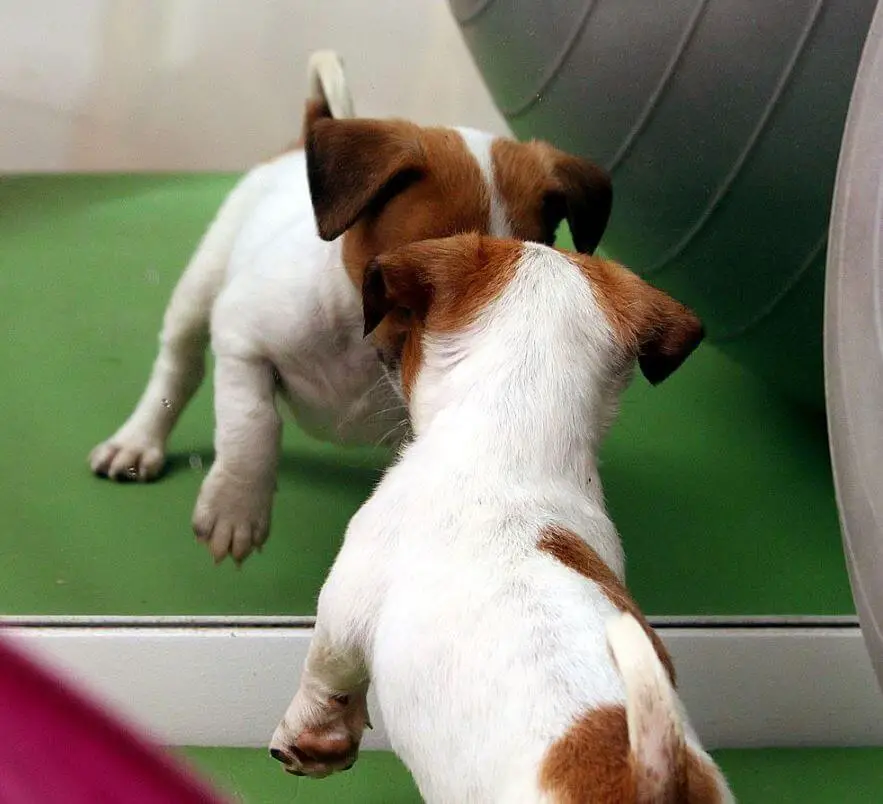Have you ever caught your dog gazing into a mirror and wondered if they recognize themselves? In this article, we’ll explore the intriguing question of whether dogs possess the ability to recognize their own reflections. Discover the signs that indicate self-awareness, the factors influencing their reactions to mirrors, and gain insights into the captivating world of canine perception.

Understanding Canine Perception:
1 – Limited Visual Self-Awareness:
Unlike humans, dogs don’t rely heavily on visual cues for self-awareness. Their primary senses are olfactory (smell) and auditory (hearing), and their perception of the world is shaped more by scent and sound than by sight.
2 – Mirror Test for Self-Recognition:
The mirror test, a method often used to assess self-recognition in animals, involves marking an individual and observing their reaction to their reflection. While some animals, like chimpanzees and dolphins, pass this test, dogs typically exhibit behaviors indicating they perceive the mirror image as another dog rather than recognizing themselves.
3 – Lack of Concept of Self:
Dogs may lack the cognitive concept of self, which is necessary for true self-recognition. The ability to understand that the reflection in the mirror represents their own image requires a level of cognitive complexity that may not be present in dogs.
Signs of Dogs Reacting to Mirrors:
1 – Playful Behavior:
Many dogs react to their reflection with playful behavior. They may bark, wag their tails, or even engage in a game of “chase” with what appears to be another dog in the mirror. This behavior suggests curiosity and social engagement rather than self-recognition.
2 – Aggressive Postures:
Some dogs may display aggression or defensive postures when confronted with their reflection. This reaction is often a response to the perceived intrusion of another dog into their territory, indicating a lack of understanding that the mirror image is, in fact, themselves.
3 – Indifference or Disinterest:
Certain dogs may show little to no interest in their reflection. This reaction does not necessarily indicate a lack of intelligence; rather, it reflects the individual dog’s temperament and the significance they place on visual stimuli.
Factors Influencing Reactions:
1 – Individual Differences:
Dogs, like humans, have individual personalities and temperaments. Some dogs may be more visually oriented and curious, while others may be less interested in mirrors or reflective surfaces.
2 – Early Exposure:
Dogs that are exposed to mirrors from a young age may be more familiar with their own reflections. Early exposure can influence a dog’s reaction and level of interest in mirrors.
3 – Socialization:
A dog’s socialization experiences play a role in how they perceive the world, including mirrors. Dogs that have positive socialization experiences may be more likely to engage with their reflections in a curious or playful manner.
While dogs may display various reactions to mirrors, the evidence suggests that true self-recognition, as observed in some other animals, may not be a prominent feature of canine perception. Understanding the signs and factors influencing a dog’s reaction to mirrors allows pet owners to appreciate the unique ways in which their furry friends interact with the world around them.
